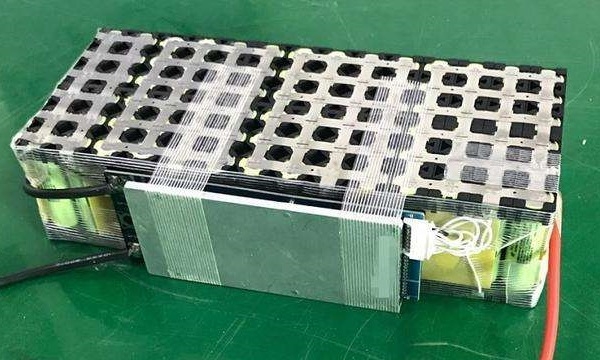Lithium-ion battery is an ideal power source due to its high working voltage, small size, light weight, no memory effect, no pollution, small self-discharge, and long cycle life. In actual use, in order to obtain a higher discharge voltage, at least two single-cell lithium-ion batteries are generally used in series to form a lithium-ion battery pack. At present, lithium-ion battery packs have been widely used in various fields such as notebook computers, electric bicycles and backup power sources.

Therefore, how to charge the lithium-ion battery pack is very critical. Now I will describe several charging methods commonly used by the lithium-ion battery pack and the most suitable charging method that I think are as follows:
1. Series charging
At present, the charging of lithium-ion battery packs generally uses series charging, which is mainly because the series charging method has a simple structure, low cost, and is relatively easy to implement. However, due to the differences in capacity, internal resistance, attenuation characteristics, and self-discharge among the individual lithium-ion batteries, when the lithium-ion battery pack is charged in series, the single-cell lithium-ion battery with the smallest capacity in the battery pack will It is fully charged first, and at this time, other batteries have not been fully charged. If the serial charging is continued, the fully-charged single-cell lithium-ion battery may be overcharged.
Overcharging a lithium-ion battery can seriously damage the performance of the battery, and may even cause an injury due to an explosion. Therefore, in order to prevent overcharging of a single lithium-ion battery, a lithium-ion battery pack is generally equipped with a battery management system (BMS for short), through the battery management system to protect each single-cell lithium-ion battery. When charging in series, if the voltage of a single lithium-ion battery reaches the overcharge protection voltage, the battery management system will cut off the entire series charging circuit and stop charging to prevent this single battery from being overcharged, which will cause other Lithium-ion batteries cannot be fully charged.
2. Parallel charging
In order to solve the problem of overcharging and undercharging of some single cells in the battery pack, a parallel charging method has been developed. However, the parallel charging method uses multiple low-voltage, high-current charging power sources for each single cell. Battery charging has the disadvantages of high cost of charging power, low reliability, low charging efficiency, thick connection wire diameter, etc. Therefore, this charging method has not been widely used at present.
3. The battery management system and charger are coordinated and charge in series
The battery management system is the most comprehensive device to understand the performance and status of the battery. Therefore, establishing a connection between the battery management system and the charger can enable the charger to understand the battery information in real time, thereby more effectively solving the battery charging problems arise.
The principle of the battery management system and charger in coordination with the charging mode is: The battery management system monitors the current state of the battery (such as temperature, battery voltage, battery operating current, consistency, temperature rise, etc.) and uses these parameters The maximum allowable charging current of the current battery is estimated; during the charging process, the battery management system and the charger are connected through a communication line to realize data sharing. The battery management system transmits parameters such as total voltage, highest single cell voltage, highest temperature, temperature rise, maximum allowable charging voltage, maximum allowable single cell voltage, and maximum allowable charging current to the charger in real time, and the charger can The information supplied by the management system changes its charging strategy and output current.
When the maximum allowable charging current supplied by the battery management system is higher than the designed current capacity of the charger, the charger will charge according to the designed maximum output current; when the battery voltage and temperature exceed the limits, the battery management system can detect and notify the charging in real time The charger changes the current output; when the charging current is greater than the maximum allowed charging current, the charger starts to follow the maximum allowed charging current, which effectively prevents the battery from overcharging and extends the battery life. Once a failure occurs during the charging process, the battery management system can set the maximum allowable charging current to 0, forcing the charger to stop, preventing accidents and ensuring the safety of charging.
In this charging mode, it not only improves the management and control functions of the battery management system, but also enables the charger to change the output current in real time according to the state of the battery, so as to prevent the overcharging of all batteries in the battery pack and optimize the charging. The actual discharge capacity of the battery pack is also larger than the ordinary series charging method, but this method still cannot solve the problem of some batteries in the battery pack being undercharged, especially when the number of battery strings is large, the battery consistency is poor, and the charging current is relatively low.
4. Series high current charging plus small current parallel charging
Since there are certain problems with the above three charging methods, I recommend a charging method that is most suitable for high-voltage battery packs, especially electric vehicle battery packs, that is, using a battery management system and charger to coordinate with a series of high-current charging and constant voltage. Current-limited parallel low-current charging mode.
This charging method has the following characteristics:
(1) Since the BMS of this system has the function of preventing overcharging, it can ensure that the battery will not be overcharged. Of course, if the BMS cannot communicate and control with the parallel charging power supply, the constant voltage value of the parallel charging power supply is generally the same as the voltage value of the single-cell lithium-ion battery in the lithium-ion battery pack when it is fully charged, so there will be no overcharge problem .
(2) Because parallel charging can be performed, do not use a balanced circuit with low reliability and relatively high cost, and the charging effect is better than the series charging method with only the balanced circuit, and its maintenance management is also simple and easy.
(3) Because the maximum current of series charging is much larger than the current of parallel charging (usually more than 5 times), it can ensure that a higher capacity is charged in a shorter time, thereby exerting the maximum effect of series charging.
(4) The order of serial charging and parallel charging and the number of parallel charging power sources can be flexibly grasped during charging, and simultaneous charging can be performed; parallel charging can be performed after series charging is completed; or a parallel charging power source can be used according to In some cases, the batteries with the lowest voltage are alternately charged.
(5) With the development of technology, the parallel charging power source can be a non-contact charging power source (wireless charging power source) or a solar battery power source, thereby making parallel charging simple.
(6) When the number of individual lithium-ion batteries in the lithium-ion battery pack is large, the lithium-ion battery component can be divided into several lithium-ion battery pack modules, and each lithium-ion battery pack module uses BMS and a charger to coordinate and cooperate with each other in series. Charging is performed by a combination of current charging and constant-voltage current limiting parallel small current charging.
Its important purpose is to reduce the disadvantage of the poor charging effect of the charging method that the BMS and the charger coordinate and cooperate with each other when the number of serial batteries in the battery pack is relatively large, which leads to the poor charging effect of the coordination method of the BMS and the charger. Coordinate the maximum effect of charging mode.
In short, this charging method that uses a battery management system and a charger in coordination with a series of high-current charging and constant voltage limiting in parallel with a small-current charging can effectively solve the problems of overcharging and undercharging that are likely to occur in series charging of lithium-ion battery packs. And it can prevent the parallel charging charging power source from high cost, low reliability, low charging efficiency, thick connection wire diameter and other problems. It is currently the most suitable method for charging high-voltage battery packs, especially electric vehicle battery packs.



